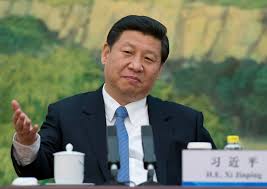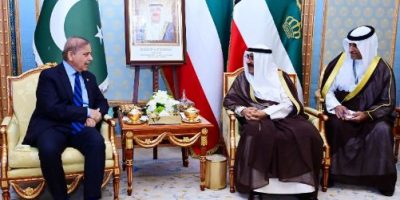President Xi calls for advancing belt and road initiative

BEIJING, August 18 (DNA): Chinese President Xi Jinping on has called for steady advance of the country’s Belt and Road Initiative to benefit people along the routes.The Belt and Road Initiative should help promote policy coordination, infrastructure connectivity, unimpeded trade, financial integration and mutual understanding among the people, Xi said at a symposium on the initiative held in Beijing.
Priority areas for the initiative include building a platform to advance cooperation as well as a green, healthy, intelligent and peaceful Silk Road, Xi said.
The conference was also attended by Vice Premier Zhang Gaoli, National Development and Reform Commission’s head Xu Shaoshi, Foreign Minister Wang Yi, Communist Party chiefs of Fujian, Xinjiang, Guangdong and Shaanxi, as well as experts from think tanks.
The initiative, proposed by Xi in 2013, refers to building a Silk Road Economic Belt and the 21st Century Maritime Silk Road. It is aimed at building a trade and infrastructure network connecting Asia with Europe and Africa along ancient trade routes.
Xi said more than 100 countries and international organizations have participated in the Belt and Road Initiative. China has signed agreements with more than 30 countries along the routes to jointly build the Belt and Road, and more than 20 countries have teamed up with China in industrial cooperation.
The progress and results of the Belt and Road Initiative have been greater than expected, Xi noted.
The Belt and Road can be seen as an opportunity to promote transnational interconnection, improve trade and investment cooperation, advance cooperation in international capacity and equipment manufacturing to rebalance and stabilize the world economy, said Xi.
Against the backdrop of a sluggish global economy, the initiative will help stabilize the world economy through industrial capacity cooperation between China and countries along the routes, to advance their industrialization and modernization, as well as improve their infrastructure, Xi said.
Xi stressed that more specific Belt and Road policies should be worked out and major support should be focused on strategic projects including facilities cooperation, energy resource use and core technology research and development.
Domestic enterprises are encouraged to invest in countries along the Belt and Road and countries along the routes are welcome to do business in China, Xi said.
Xi also advocated financial innovation and cooperation in building the Belt and Road, adding the initiative should include a stable, sustainable and risk-controllable financial security system.
The Belt and Road Initiative should also be integrated with China’s regional development plans such as the Beijing-Tianjin-Hebei coordinated development plan and the Yangtze River economic zone development plan, Xi said.
More efforts should be spent on pilot projects to generate benefits as early as possible, he added.
XI OFFERING NATIONS ‘RIDE’ ON SILK ROAD: China is willing to give other countries “a ride” as it renews ties, via the Belt and Road Initiative, with nations along the old Silk Road routes, President Xi Jinping said.
As the second-largest economy in the world, China should be “more proactive” in dealing with other countries, Xi told a meeting attended by government officials, entrepreneurs and scholars.
The president encouraged Chinese companies to invest in countries along the routes of the Belt and Road Initiative, also known as the Silk Road Economic Belt and the 21st Century Maritime Silk Road.
He also said China welcomes investment from those countries.
According to Xi, more than 100 countries and global organizations have participated in China’s Belt and Road Initiative, and more than 20 countries have worked with China in production capacity cooperation in such areas as railway construction and nuclear power.
The president urged the implementation of Belt and Road projects to ensure that the countries involved have “a sense of gain”.
The export of China’s production and construction capacity could support the Belt and Road countries to push forward industrialization and will help to stabilize the world economy, he said.
The Silk Road Economic Belt is a land-based route from China through Central Asia and Russia to Europe. The 21st Century Maritime Silk Road is a strategic route through the Strait of Malacca to India, the Middle East and East Africa.
The Belt and Road Initiative, proposed by Xi in 2013, began to take shape in 2014 with a focus on infrastructure.
Xi has made state visits to a number of countries, including the Czech Republic, Serbia, Poland and Uzbekistan, along the Belt and Road routes this year. More than 30 countries and international organizations have signed agreements and memorandums of understanding with China on jointly implementing the Belt and Road strategy.
As part of the Belt and Road projects, freight trains have made more than 2,000 trips from China to Europe and back on 39 rail lines, according to the Foreign Ministry.
Wang Licheng, board chairman of Hangzhou-based Holley Group, said at the meeting that the Thai-Chinese Rayong Industrial Zone, jointly developed by Wang and his partners in Thailand, has created more than 20,000 jobs for people in Thailand’s east coastal region.
The company plans to build an occupational school near the industrial zone to train more skilled workers, a proposal that has been welcomed by Thai authorities, he said.
The entrepreneur suggested that the construction of industrial parks abroad should be set as China’s national strategy, with supportive policies established to encourage private companies to expand business overseas.
Liu Weidong, director of the Belt and Road Strategy Institute of the Chinese Academy of Social Sciences, said that through the Belt and Road strategy, China could allocate global resources and provide services for the whole world.
Wang Yiwei, an expert on European studies with Renmin University of China in Beijing, said that through the Belt and Road projects, China could share its development experience with other countries as well as find new markets for its production capacity.
Countries in the Central and Eastern Europe region are eager to develop ties with China to attract more Chinese investment, and President Xi’s state visits to the CEE countries in March and June have brought results, he said.
DNA
Related News

World Economic Forum: PM Shehbaz holds talks with Kuwaiti Amir
RIYADH, APR 28 /DNA/ – Prime Minister Muhammad Shehbaz Sharif met the Amir of Kuwait,Read More

Egypt Sends Negotiators to Israel, Fearing Time Is Running Out for Rafah
Cairo’s intelligence chief leads effort to spur new Gaza cease-fire proposal and stave off invasionRead More


Comments are Closed